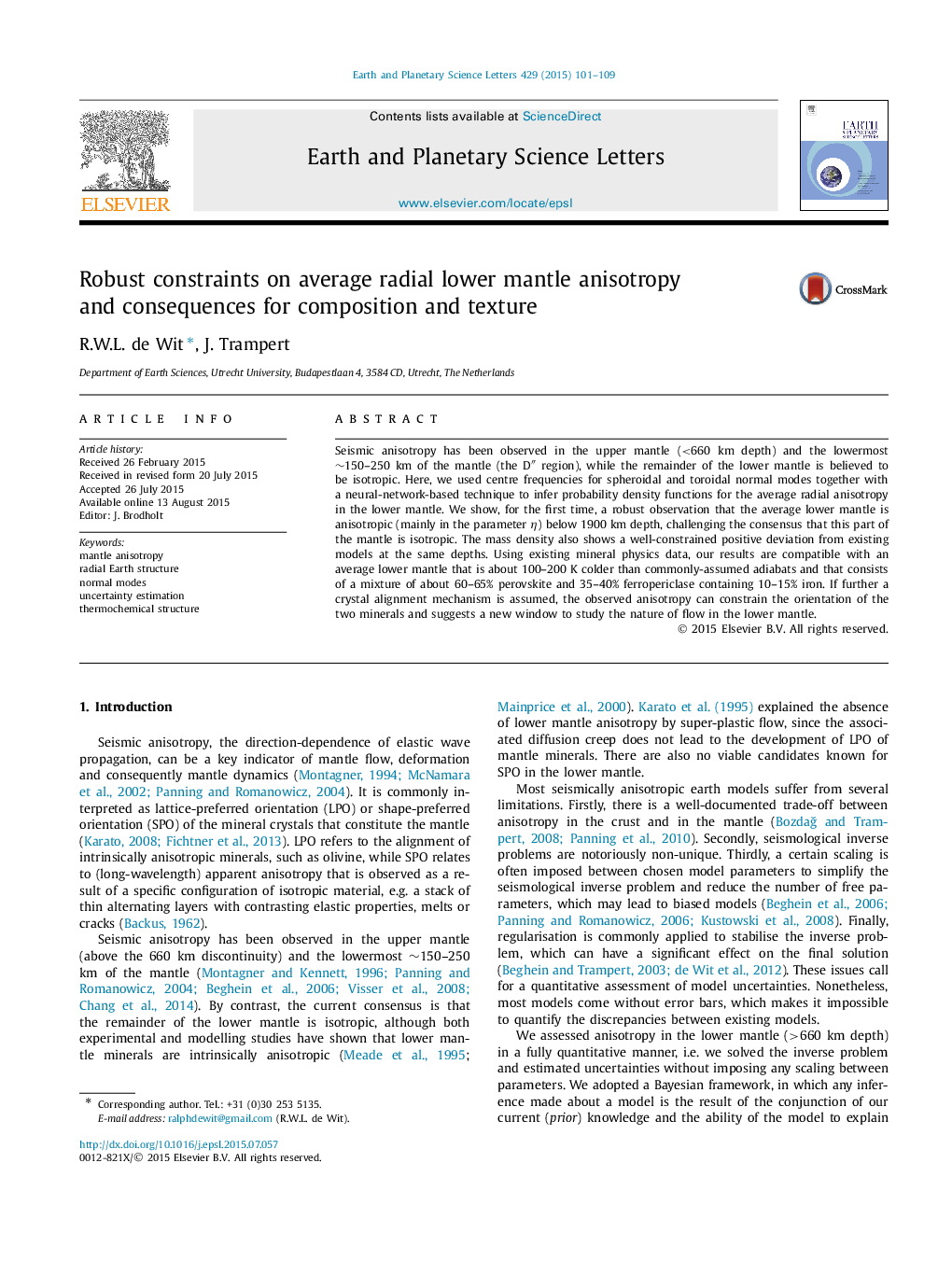| Article ID | Journal | Published Year | Pages | File Type |
|---|---|---|---|---|
| 6428185 | Earth and Planetary Science Letters | 2015 | 9 Pages |
â¢A Bayesian inversion of normal mode data for radial (1-D) lower mantle structure.â¢We assess the robustness of features in existing models using a neural network method.â¢The data prefer an average lower mantle that is anisotropic below 1900 km depth.â¢This challenges the consensus that this part of the mantle is isotropic.â¢The observed elasticity can be explained by currently available mineral physics data.
Seismic anisotropy has been observed in the upper mantle (<660km depth) and the lowermost â¼150-250km of the mantle (the Dâ³ region), while the remainder of the lower mantle is believed to be isotropic. Here, we used centre frequencies for spheroidal and toroidal normal modes together with a neural-network-based technique to infer probability density functions for the average radial anisotropy in the lower mantle. We show, for the first time, a robust observation that the average lower mantle is anisotropic (mainly in the parameter η) below 1900 km depth, challenging the consensus that this part of the mantle is isotropic. The mass density also shows a well-constrained positive deviation from existing models at the same depths. Using existing mineral physics data, our results are compatible with an average lower mantle that is about 100-200 K colder than commonly-assumed adiabats and that consists of a mixture of about 60-65% perovskite and 35-40% ferropericlase containing 10-15% iron. If further a crystal alignment mechanism is assumed, the observed anisotropy can constrain the orientation of the two minerals and suggests a new window to study the nature of flow in the lower mantle.
